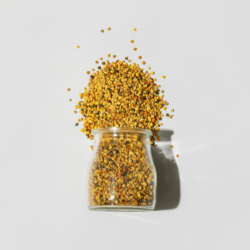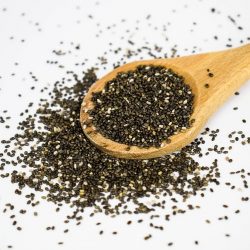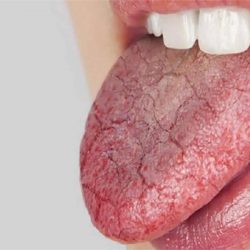The AIP protocol is a dietary and lifestyle approach designed to reduce the intensity of symptoms caused by autoimmune diseases. Although studies on this protocol are still limited, many people who have followed this dietary method have seen a marked improvement in their general condition and a reduction in their symptoms.
Autoimmune diseases
An autoimmune disease is triggered when the body’s natural protection system is no longer able to differentiate its own cells from foreign cells. As a result, the body begins to attack its own cells. There are more than 80 types of autoimmune disease, affecting different parts of the body. Autoimmune diseases form a group that includes conditions as diverse as type 1 diabetes, multiple sclerosis, rheumatoid arthritis and Crohn’s disease. They are all chronic diseases triggered by the body’s loss of immunologicaltolerance to its own constituents.
Discovering the AIP protocol
Being diagnosed with an autoimmune disease can be very difficult to accept. That’s why it’s encouraging to know thatan elimination regime like AIP can help reduce the manifestations of various autoimmune diseases while improving patients’ quality of life. Although it is called the AIP protocol (autoimmune disease protocol), this regime is not exclusively reserved for people with autoimmune diseases.
The protocol can be a little intimidating at first. But once you’ve mastered the basics, all you have to do is personalise it to suit your needs. In this way, you’ll be able to get good results based on your own symptoms.
What role does diet play in the management of autoimmune diseases?
Excessive inflammation can lead to many autoimmune diseases. At this point, a change in diet can be beneficial. In fact, if you choose to remove from your daily diet all the foods that are potentially inflammatory and therefore likely to exacerbate your symptoms, you may find that the symptoms of your autoimmune disease become somewhat milder. This is why the AIP protocol emphasisesidentifying the foods that trigger an inflammatory response.
Another concept, known as ‘molecular mimicry’, seems to explain the impact of certain foods on autoimmune diseases.
For example, high levels of immune cells linked to a cow’s milk protein have been observed in patients with type 1 diabetes. In fact, this theory seems to indicate that these proteins are similar to the proteins present in the pancreas. This triggers a response from the immune system, which attacks not only the milk proteins but also the healthy cells in the patient’s own pancreas. A diet very rich in sodium can also play a role in aggravating autoimmune diseases. As can excessive consumption of pro-inflammatory foods such as processed vegetable oils, meat, dairy products, etc.)
How does the AIP protocol work?
The AIP protocol has some similarities with the paleo diet. However, this two-phaseelimination diet is stricter than its predecessor. Today we’re going to concentrate on the first phase:
The elimination phase
During this first phase, the aim is to remove all foods likely to cause inflammation, imbalance or an immune response in the intestine . In addition, foods from the cereal, oilseed and solanaceae families , eggs and dairy products are completely eliminated from the diet. Refined sugar, alcohol, tobacco, coffee, food additives and non-steroidal anti-inflammatory drugs (NSAIDs) are also eliminated.
On the other hand, the emphasis is on improving lifestyle (sleep, stress management and increasing gentlephysical activity ) and eating certain foods rich in vitamins and minerals:
- colourful seasonal fruit and vegetables
- fermented foods
- bone broth
- quality meats
The length of this elimination phase varies from person to person. Some people see an improvement after just a few weeks, while others will need to extend the period of restriction by around three months. The important thing is to be able to observe a significant reduction in symptoms.
The reintroduction phase
When you notice a clear improvement in your symptoms, you can embark on the reintroduction phase. Gradually reintroduce the foods you have been avoiding into your diet, one after the other, according to your tolerance.
The aim of this phase is to be able to identify the foods that trigger or aggravate your symptoms. In this way, you can continue to reintroduce foods that do not cause problems while avoiding your own triggers. All this makes it possible to set up a 100% individualised and, above all, effective eating programme . During this phase, you will reintroduce foods one by one, approximately once a week.
The natural health expert’s opinion
As a natural health expert, I believe that the Paleo A.I.P diet can be an effective nutritional approach to help manage autoimmune diseases. Autoimmune diseases are often linked to intestinal dysbiosis, chronic inflammation and nutritional deficiencies, and the Paleo A.I.P diet can help treat these problems.
The A.I.P Paleo diet eliminates processed foods, cereals, legumes, dairy products, eggs, nuts and seeds, food additives and industrial oils, which are foods that can trigger an inflammatory response in the body. By eliminating these foods and providing essential nutrients to repair damaged cells, the Paleo A.I.P diet can help reduce inflammation, improve intestinal health, provide essential nutrients and reduce the symptoms of autoimmune diseases.
However, it is important to consult a healthcare professional before starting the Paleo A.I.P diet, as it may not be suitable for everyone. The diet can also be difficult for some people to follow, as it eliminates many common foods. Overall, I think the Paleo A.I.P diet can be an effective nutritional option to help manage autoimmune diseases, but it’s important to tailor it to each person’s individual needs and to monitor symptoms throughout the process.
FAQ
- Is the Paleo A.I.P. diet safe for everyone?
It is important to consult a healthcare professional before starting the Paleo A.I.P. diet, as it may not be suitable for everyone.
- How long should I follow the Paleo A.I.P. diet?
It is recommended that you follow the A.I.P. Paleo diet for at least 30 days. This should lead to significant improvements in symptoms. After that, certain foods can be reintroduced gradually to see how the body reacts.
- What foods are permitted on the Paleo A.I.P. diet?
Leafy green vegetables, grass-fed meats, wild fish, fruit, healthy fats such as olive oil and avocado, and fermented foods such as kefir and kimchi.
- Can the Paleo A.I.P. diet help reduce joint pain?
Yes, the Paleo A.I.P. diet can help reduce joint pain by reducing inflammation in the body.
- Is the Paleo A.I.P diet effective for all autoimmune diseases?
Finally, this diet may not be suitable for everyone with these diseases. It is important to consult a healthcare professional to find out whether the diet is suitable for your specific case.
Read more:
- https://www.ncbi.nlm.nih.gov/pmc/articles/PMC5647120/
- https://pubmed.ncbi.nlm.nih.gov/25599184/
- https://www.ncbi.nlm.nih.gov/pmc/articles/PMC7147823/
- https://pubmed.ncbi.nlm.nih.gov/30944837/
- https://www.ncbi.nlm.nih.gov/pmc/articles/PMC8620243/
- https://www.niehs.nih.gov/health/topics/conditions/autoimmune/index.cfm







